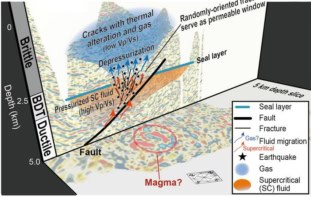A geophysicist in the US has new evidence that the oceans are responsible for the Earth's strange low-frequency hum. Spahr Webb of Columbia University says that low frequency "infragravity" ocean waves interact with one another to make the ocean floor vibrate at a specific set of frequencies between 1-10 mHz. Webb says that his theory is supported by seismic and ocean data, which show correlations between hum and wave activity (Nature 445 754).
Over the past decade geophysicists have become increasingly aware that the Earth is vibrating at a series of well-defined “infrasonic” frequencies between about 1-10 mHz. The origins of this hum have been the subject of heated debate. Earthquakes were an obvious candidate, but they were ruled out along with interactions between turbulence in the atmosphere and the Earth’s surface.
Then in 2004, researchers found that the strongest hums appeared to be coming from the oceans. Now, Webb has shown that two or more infragravity waves interact to create pressure waves that set the Earth humming at its natural mHz vibrational modes. Webb believes that these interactions occur over the continental shelves – the shallow water surrounding land masses where infragravity waves are most common.
Infragravity waves are not the familiar wind-driven waves that form on the surface of the ocean. Rather, they are produced when higher frequency wind-driven waves (above 40 Hz) interact with the shore. These infragravity waves have frequencies in the 1-40 mHz range and much smaller amplitudes than typical ocean waves.



